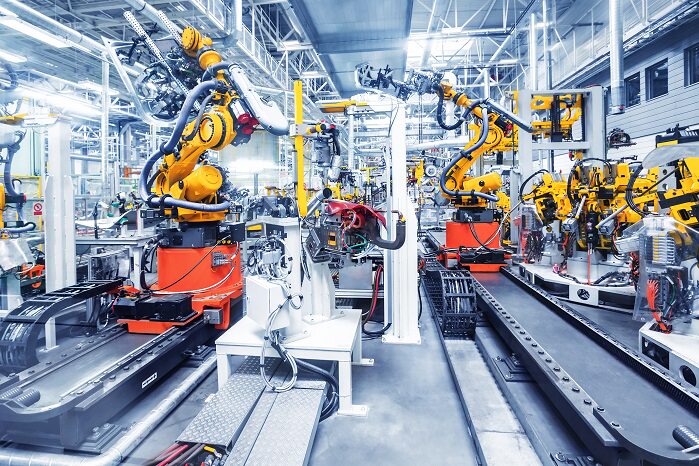Why Vietnam's Economy is Booming - Alibaba Seller

Over the last 10 years, Vietnam has captured the attention of the global business community. The country’s economy was driven by agriculture just a few decades ago, but now Vietnam stands as one of Southeast Asia's fastest-growing economies.
Table of Contents
Introduction to Vietnam's Economic Growth
Vietnam’s appeal isn't just its spectacular GDP growth. There are more factors contributing to its rise. As the global e-commerce landscape shifts and evolves, Vietnam is becoming a key player due to its growing middle class, technological adoption, and favorable trade relationships.
For e-commerce sellers and entrepreneurs, especially those on Alibaba.com, Vietnam, is not just an interesting study but a promising marketplace. Alibaba's Verified Supplier feature ensures trust and transparency, giving buyers confidence in their sellers.
The fusion of a young, tech-savvy population and a government dedicated to economic reform presents a golden opportunity for those with the vision to seize it.
A Brief Overview of Vietnam's Economy
Once known for its scenic beauty and tumultuous history, Vietnam has steadily emerged as an economic powerhouse in Southeast Asia. Its transformation has drawn the attention of businesses, investors, and, more importantly, e-commerce giants.
Key Indicators of Vietnam's Economic Boom
Vietnam's robust manufacturing sector, significant foreign direct investments, and a strategic embrace of global supply chains all hint at an economy that's not just growing but thriving. The momentum it has gained is not just a result of happenstance but a blend of policy, innovation, and entrepreneurship.
Factors Contributing to Vietnam's Economic Progress
Vietnam's rise in the global economy demonstrates the country’s transformation, resilience, and strategic decision-making.
The progress witnessed in the past few decades isn't a result of mere luck or accidental factors, but rather a concerted effort by the country's leaders, business community, and the Vietnamese people.
To truly understand Vietnam's economic ascendancy, we need to unpack the significant shifts and policies that have paved the way.
Shifting from a Centralized Economy to a Market-Oriented one
Before the late 1980s, Vietnam had a predominantly centralized economy, with most industries under state control. This model, while providing certain societal safety nets, had its limitations in terms of efficiency, productivity, and engagement with the global marketplace.
The Vietnamese government recognized the need for change and embarked on a path of economic reforms.
These reforms aimed to transform the nation from a centralized economy, with predominant state-owned enterprises, to a more open, market-oriented structure. This pivot was critical in stimulating economic growth, attracting foreign investment, and integrating Vietnam into global supply chains.
The Doi Moi Policy and its Effect on Vietnam's Economy
At the heart of this transformation was the 'Doi Moi' policy, introduced in 1986. Doi Moi, which translates to 'Renovation', was a series of reforms aimed at creating a "socialist-oriented market economy."
The policy was a bold step away from the stringent, state-controlled economic model that had dominated Vietnam since its reunification in 1975.
The effects of Doi Moi were:
Opening up to Foreign Investment:
Vietnam became an attractive destination for foreign direct investment. With the government liberalizing investment policies and offering incentives, multinational corporations started setting up shop, bringing with them not just capital but also technological expertise.
Privatization and Modernization:
Many state-owned enterprises underwent privatization, leading to increased efficiency. Additionally, sectors like banking, telecommunications, and transportation witnessed significant modernization, enabling a more conducive business environment.
Engaging in Free Trade Agreements:
Vietnam proactively engaged in regional and global trade agreements, thereby reducing tariffs and barriers, and facilitating smoother trade relations. This strategic move allowed Vietnam to become an integral part of the global supply chain, boosting its export-led growth.

Growth in Manufacturing and Services Sector
Alongside the policy transformations, the manufacturing and services sectors in Vietnam began to boom. Here's a deeper dive into how these sectors contributed to Vietnam's economic narrative:
Manufacturing Prowess:
Vietnam's robust manufacturing sector, particularly in electronics, textiles, and garments, made it a global hub. Affordable labor, coupled with an improving infrastructure, attracted many global companies to shift their manufacturing bases to Vietnam.
Furthermore, Vietnam's inclusion in global e-commerce markets, such as Alibaba.com, emphasized its manufacturing potential and allowed local businesses to tap into global B2B and wholesale business. Alibaba offers local service support to guide sellers, ensuring a smooth selling experience.
Services Sector Surge:
The services sector, particularly tourism, IT, and retail, experienced significant growth.
With a rising middle class, there was a surge in domestic consumption patterns, which in turn bolstered the retail sector. IT services, with a focus on software development and IT-enabled services, became a prominent contributor to exports and employment.
In essence, Vietnam's journey from a war-torn nation to one of the fastest-growing economies in Southeast Asia is a testament to its strategic vision, resilience, and adaptability. For e-commerce sellers and entrepreneurs, especially on platforms like Alibaba.com, the potential is vast.
Alibaba's product showcase feature enables businesses to display their products prominently, leading to increased visibility and potential sales. The key lies in understanding the nuances of the market and leveraging the myriad opportunities it presents.
Influence of Foreign Direct Investment on Manufacturing
Foreign Direct Investment (FDI) has been the linchpin in Vietnam's manufacturing renaissance. The influx of foreign capital, technology, and know-how into the country has immensely augmented its manufacturing capabilities.
Technological Transference:
One of the foremost benefits of FDI has been the transference of modern technologies. International companies, seeking to capitalize on Vietnam's cost-effective labor market, have introduced cutting-edge technologies and techniques, enhancing the overall productivity and quality of the manufacturing sector.
Creation of Job Opportunities:
FDI has led to the establishment of numerous manufacturing units across the country, resulting in significant employment generation. This has not only improved the standard of living for many Vietnamese but has also imparted crucial skills to the workforce.
Infrastructure Development:
To accommodate the surge in manufacturing activities, there has been a parallel emphasis on developing essential infrastructure. Roads, ports, and industrial zones have seen substantial enhancements, thanks to foreign investments.

Global Market Access:
With many multinational corporations setting up their manufacturing bases in Vietnam, the country has been seamlessly integrated into global supply chains.
This has broadened Vietnam’s market access, facilitating the country's products to reach consumers worldwide. Alibaba's insights into global e-commerce markets, sellers can target their products for specific regions or countries, optimizing their sales strategy.
The Rise of the Services Sector
Parallel to the growth in manufacturing, Vietnam's services sector has seen a remarkable uptick. This growth is primarily driven by the digital transformation wave, burgeoning tourism, and the rise of the financial services sector.
Digital Boom:
The surge in digital connectivity and the proliferation of smartphones have given rise to e-commerce, fintech, and online services, with platforms like Alibaba enabling local businesses to connect with global buyers and sellers.
An easy-to-set-up online store gives sellers a digital presence, allowing them to cater to a global audience around the clock.
Tourism Flourish:
Vietnam, with its rich cultural heritage and scenic beauty, has become a favorite destination for global tourists. The tourism sector has not only boosted the hospitality industry but has also provided impetus to local artisans and businesses.
Financial Services:
With the modernization of the banking sector and the introduction of various financial products, services related to finance, insurance, and real estate have seen robust growth.
An Agile Export-Oriented Strategy
Vietnam's export-oriented strategy has been pivotal to its GDP growth. Recognizing the importance of exports for economic development, the Vietnamese government introduced various incentives and reforms to bolster its export sector.
Product Portfolio of Vietnam's Exports
Vietnam's exports are diversified, ranging from electronic products and machinery to textiles and agricultural products.
Electronics and Machinery:
These have become the backbone of Vietnam's exports, with smartphones, computers, and other electronics topping the list. The presence of global tech giants in Vietnam has played a significant role in this.

Textiles and Footwear:
Vietnam is one of the largest exporters of textiles and garments, catering to major brands across the world. Footwear, both leather and non-leather, also forms a substantial part of the exports.
Agricultural Produce:
Vietnam is a leading exporter of products like coffee, rice, seafood, and pepper, holding significant shares in the global market for these commodities.
Major Import Partners of Vietnam
China:
Being the neighboring country and a global manufacturing powerhouse, China is Vietnam's largest import partner. Goods ranging from machinery, raw materials, to consumer products are predominantly imported from China.
South Korea:
Primarily electronics, machinery, and technology-related goods.
US:
Although the US is more of an export destination for Vietnam, imports include machinery, technologies, and certain agricultural products.
Japan:
Automobiles, machinery, and technology-related equipment form the bulk of imports from Japan.
Vietnam's strategic approach to economic development, coupled with its adaptability and resilience, has positioned it as one of the fastest-growing economies in Southeast Asia.
For e-commerce sellers and entrepreneurs on platforms like Alibaba.com, the Vietnamese market presents a treasure trove of opportunities waiting to be tapped.
Role of International Agreements on Vietnam's Economy
Impact of the Comprehensive and Progressive Agreement for Trans-Pacific Partnership (CPTPP)
The CPTPP, a key trade agreement among 11 countries surrounding the Pacific Ocean, has had a profound influence on Vietnam’s economy. As a signatory, Vietnam enjoys:
Reduced Tariffs:
A significant reduction in tariffs has made Vietnamese goods more competitive in member countries, propelling exports.
Increase in Foreign Direct Investment:
The agreement establishes Vietnam as an attractive investment destination, ensuring better protection and market access for foreign investors.
Strengthened Labor Rights and Environmental Commitments:
Aligning with international standards has not only improved workers' conditions but has also made Vietnamese products more appealing in eco-conscious markets.
Impact of The EU-Vietnam Free Trade Agreement (EVFTA)
The EVFTA has paved the way for deeper economic ties between Vietnam and the European Union.
Access to a Massive Market:
Vietnam now has tariff-free access to the EU’s market of over 500 million consumers, boosting exports of seafood, textiles, and agriculture.
Enhanced FDI:
European businesses see Vietnam as a potential hub for manufacturing, thanks to the preferential access it offers.
Adherence to Global Standards:
The agreement ensures Vietnam aligns its production standards, labor laws, and environmental regulations with global benchmarks, enhancing its global trade reputation.
Vietnam's Economic Resilience During Covid-19
How Vietnam's Economy Weathered the Pandemic

Despite the global economic downturn, Vietnam's proactive measures ensured relative stability:
Swift Health Measures:
Quick isolation of cases and rigorous contact tracing helped in curbing the spread.
Export Reorientation:
With the pandemic affecting many economies, Vietnam swiftly shifted its export strategy, focusing on products in demand, such as medical equipment.
Diverse Economic Activities:
Vietnam's varied economic activities, from agriculture to IT, meant that while some sectors saw a decline, others experienced growth.
Governmental Policies to Mitigate Economic Impact of COVID-19
The Vietnamese government adopted several policies to mitigate the effects of COVID-19:
Financial Assistance:
Loans at lowered interest rates were provided to businesses, and fiscal packages were introduced to boost consumption.
Tax Breaks:
Tax reliefs and deferrals were provided to affected sectors to ensure continuity.
Investment in Infrastructure: Public works were expedited to generate employment and enhance future growth potential.
Future Prospects for Vietnam's Economic Growth
Emerging Sectors to Watch
Technology and Startups:
With a young, tech-savvy population, Vietnam is fast becoming a hub for startups in fintech, e-commerce, and software services.
Green Energy:
Vietnam's focus on sustainable development is pushing growth in solar and wind energy.

Agro-Processing: With rich biodiversity, Vietnam is moving up the value chain, processing its agricultural products for export.
Potential Challenges and Bottlenecks
Skilled Labor Shortage:
Rapid growth necessitates a skilled workforce. Meeting this demand is crucial.
Environmental Concerns:
Sustainable growth without environmental degradation remains a challenge.
Infrastructure:
Keeping pace with the infrastructural needs of a growing economy is essential.
Government's Role in Further Accelerating Economic Growth
Ensuring continued reforms, attracting FDI, investing in education, and ensuring infrastructure development remain at the forefront of government policies.
📌Read more:
FAQs
Here are answers to the frequently asked questions regarding Vietnam.
What are the main factors contributing to the rapid growth of Vietnam's economy?
The main factors contributing to the rapid growth of Vietnam's economy include strong foreign direct investment (FDI), the flourishing manufacturing and export sector, and a steady increase in domestic consumption. Further, government reforms and a young, educated workforce have also played pivotal roles in this economic surge.
How does the government policy support the economic boom in Vietnam?
The government policy in Vietnam supports the economic boom by emphasizing economic liberalization, foreign direct investment, and international trade. It has also made significant efforts to modernize infrastructure and improve the business climate to attract global businesses.
What role does foreign investment play in Vietnam's economic boom?
Foreign investment plays a crucial role in Vietnam's economic boom by providing capital, knowledge transfer, and technological advancements that drive the country's production capabilities. It also aids in developing infrastructure, creating jobs, and fostering more competitive business environments.
How does Vietnam's economic growth compare to other countries in Southeast Asia?
Vietnam's economic growth is one of the fastest in Southeast Asia, outpacing several neighboring countries like Malaysia, Thailand, and the Philippines. It has demonstrated sustainable development by leveraging various progressive reforms, strategic location, and a young labor force — elements that have made it a strong contender in the region's economic landscape.
What are potential challenges that could hinder Vietnam's economic growth in the future?
Potential challenges that could hinder Vietnam's economic growth include possible trade disruptions from international disputes, shortages in skilled labor, and infrastructural limitations. Additionally, economic reform is required to reduce the large state sector and liberalize sectors like finance and real estate, without which momentum may slow down.
Start Selling on Alibaba.com
Alibaba.com isn't just a platform; it's a gateway to the global market. By selling on Alibaba.com, businesses can:
Reach Global Customers:
Access to millions of buyers from over 190 countries and regions.
Leverage Advanced Tools:
From AI-driven insights to logistics support, Alibaba provides a seamless selling experience. Alibaba's advertising solutions can significantly enhance a product's visibility, driving more traffic and potential sales.
Bank on Vietnam's Potential:
With Vietnam's booming economy, now's the time to tap into its market.
Vietnam's growth story is just beginning. Be a part of it. Join Alibaba.com today, and catapult your business to unprecedented heights.
Start your borderless business here
Tell us about your business and stay connected.
Keep up with the latest from Alibaba.com?
Subscribe to us, get free e-commerce tips, inspiration, and resources delivered directly to your inbox.














